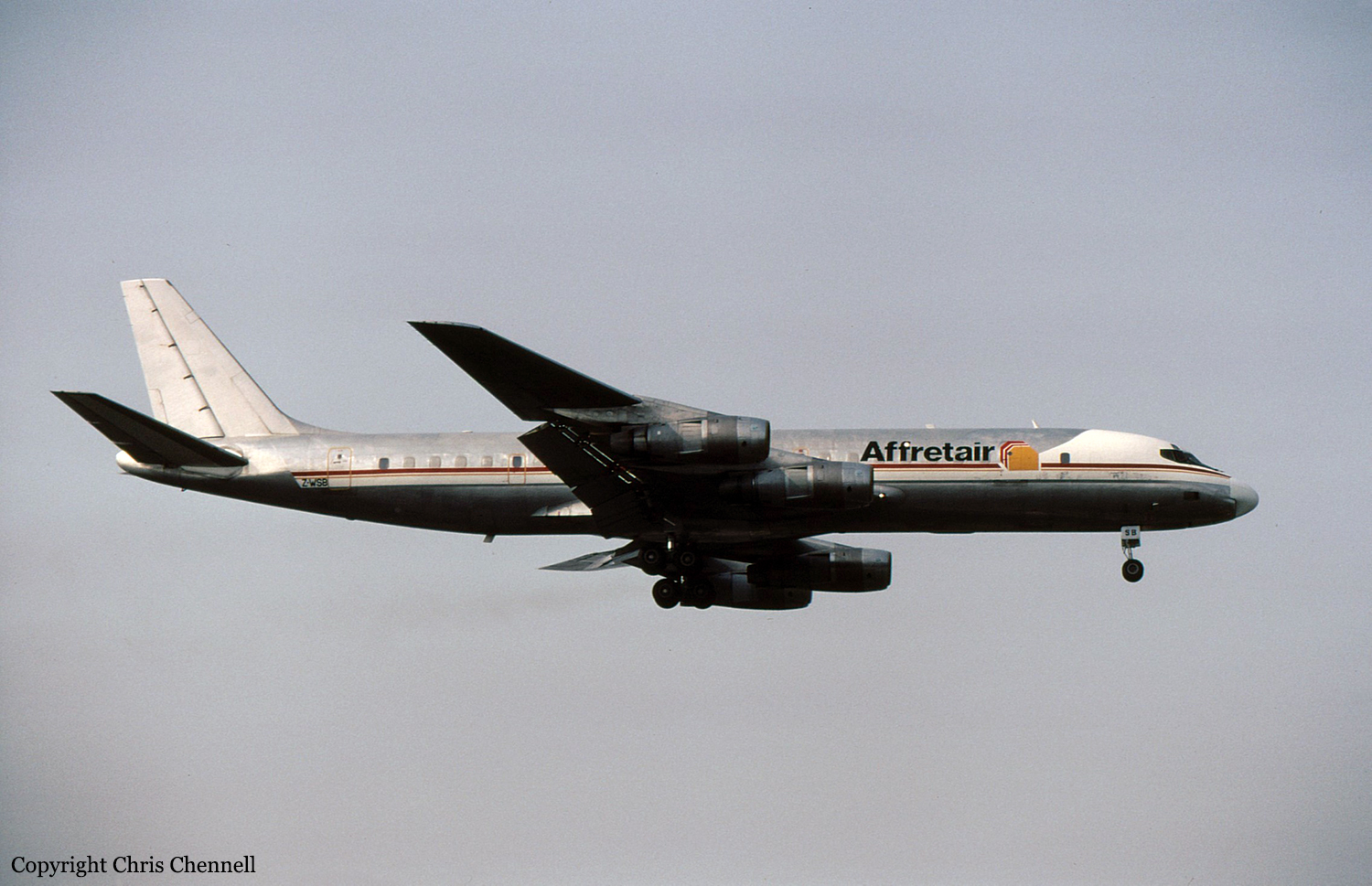Country
Crash of a Douglas DC-8-54F in Mwanza
Date & Time:
Nov 18, 1997 at 2109 LT
Registration:
EL-WVD
Survivors:
Yes
Schedule:
Entebbe - Mwanza
MSN:
45885
YOM:
1968
Crew on board:
4
Crew fatalities:
Pax on board:
0
Pax fatalities:
Other fatalities:
Total fatalities:
0
Captain / Total hours on type:
30.00
Circumstances:
The aircraft was f1ying from Entebbe (Uganda) to Mwanza (Tanzania) for the purpose of uplifting some cargo of fish fillet which was bound for Ostend, Belgium. It was carrying a crew of four including two pilot s and two engineers. The Commander said that the flight from Entebbe to Mwanza was normal except for the n°1 generator warning light which came on 10 minutes after takeoff from Entebbe. The relevant generator was subsequently switched off and the flight was continued. The aircraft flew IFR, cruising at FL250. Shortly before landing at Mwanza the commander obtained the weather information from the Mwanza Tower. The wind was calm. The controller who was handling the flight said that whilst approaching runway 12 of Mwanza airport the aircraft was swaying from side to side. When EL-WVD touched down on the runway a loud bang was heard and one engine was observed to separate and roll down the runway whilst it was on fire. Examination of the impact and tire marks showed that the right wing tip impacted the runway first followed by the n°4 engine. The right main landing gear subsequently contacted the grass surface off the left edge of the runway followed by the left main landing gear. The aircraft continued to roll in a direction almost parallel to the runway centreline for 250 metres before it crossed the runway at an angle. It was also evident from the tyre marks that as it reached the runway the aircraft made a 180° turn to point in the opposite direction whilst sliding sideways at an angle with the centreline under its own momentum. As it did so, the main landing gear collapsed and three wing pylons sheared causing the engines to separate. EL-WVD finally settled at the edge of the runway pointing 310° with the right wing projecting 2.5 metres inside the runway. There was fuel leakage but no fire. The four crew members disembarked with minor injuries.
Final Report:
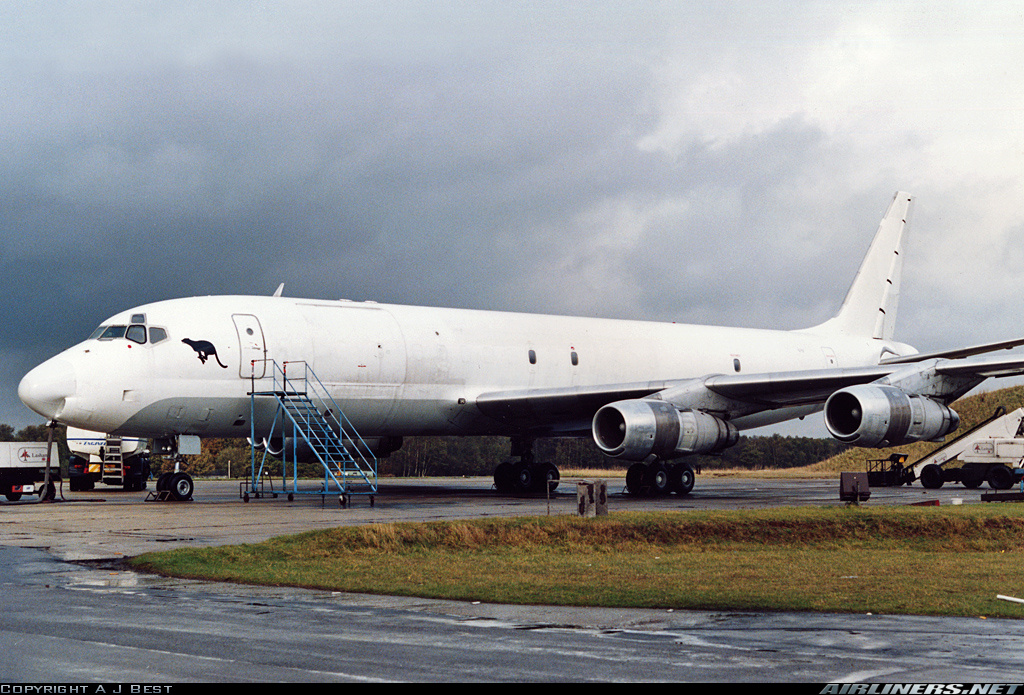
Crash of a Douglas DC-8-61F in Miami: 5 killed
Date & Time:
Aug 7, 1997 at 1236 LT
Registration:
N27UA
Survivors:
No
Schedule:
Miami - Santo Domingo
MSN:
45942
YOM:
1968
Flight number:
FB101A
Crew on board:
3
Crew fatalities:
Pax on board:
1
Pax fatalities:
Other fatalities:
Total fatalities:
5
Captain / Total hours on type:
2522.00
Copilot / Total hours on type:
1592
Aircraft flight hours:
46825
Aircraft flight cycles:
41688
Circumstances:
Fine Air Flight 101 was originally scheduled to depart Miami for Santo Domingo at 09:15 using another DC-8 airplane, N30UA, to carry cargo for Aeromar. Due to a delay of the inbound aircraft, Fine Air substituted N27UA for N30UA and rescheduled the departure for 12:00. N27UA arrived at Miami at 09:31 from San Juan, Puerto Rico, and was parked at the Fine Air hangar ramp. The security guard was not aware of the airplane change, and he instructed Aeromar loaders to load the airplane in accordance with the weight distribution form he possessed for N30UA. The first cargo pallet for flight 101 was loaded onto N27UA at 10:30 and the last pallet was loaded at 12:06. The resulting center of gravity (CG) of the accident airplane was near or even aft of the airplane’s aft CG limit. After the three crew members and the security guard had boarded the plane, the cabin door `was closed at 12:22. Eleven minutes later the flight obtained taxi clearance for runway 27R. The Miami tower controller cleared flight 101 for takeoff at 12:34. Takeoff power was selected and the DC-8 moved down the runway. The flightcrew performed an elevator check at 80 knots. Fourteen seconds later the sound of a thump was heard. Just after calling V1 a second thump was heard. Two seconds later the airplane rotated. Immediately after takeoff the airplane pitched nose-up and entered a stall. The DC-8 recovered briefly from the stall, and stalled again. The airplane impacted terrain in a tail first, right wing down attitude. it slid west across a road (72nd Avenue) and into the International Airport Center at 28th Street and burst into flames. Investigation showed that the center of gravity resulted in the airplane’s trim being mis-set by at least 1.5 units airplane nose up, which presented the flightcrew with a pitch control problem on takeoff.
Probable cause:
The probable cause of the accident, which resulted from the airplane being misloaded to produce a more aft center of gravity and a correspondingly incorrect stabilizer trim setting that precipitated an extreme pitch-up at rotation, was
1) The failure of Fine Air to exercise operational control over the cargo loading process; and
2) The failure of Aeromar to load the airplane as specified by Fine Air.
Contributing to the accident was the failure of the FAA to adequately monitor Fine Airs operational control responsibilities for cargo loading and the failure of the FAA to ensure that known cargo-related deficiencies were corrected at Fine Air.
1) The failure of Fine Air to exercise operational control over the cargo loading process; and
2) The failure of Aeromar to load the airplane as specified by Fine Air.
Contributing to the accident was the failure of the FAA to adequately monitor Fine Airs operational control responsibilities for cargo loading and the failure of the FAA to ensure that known cargo-related deficiencies were corrected at Fine Air.
Final Report:


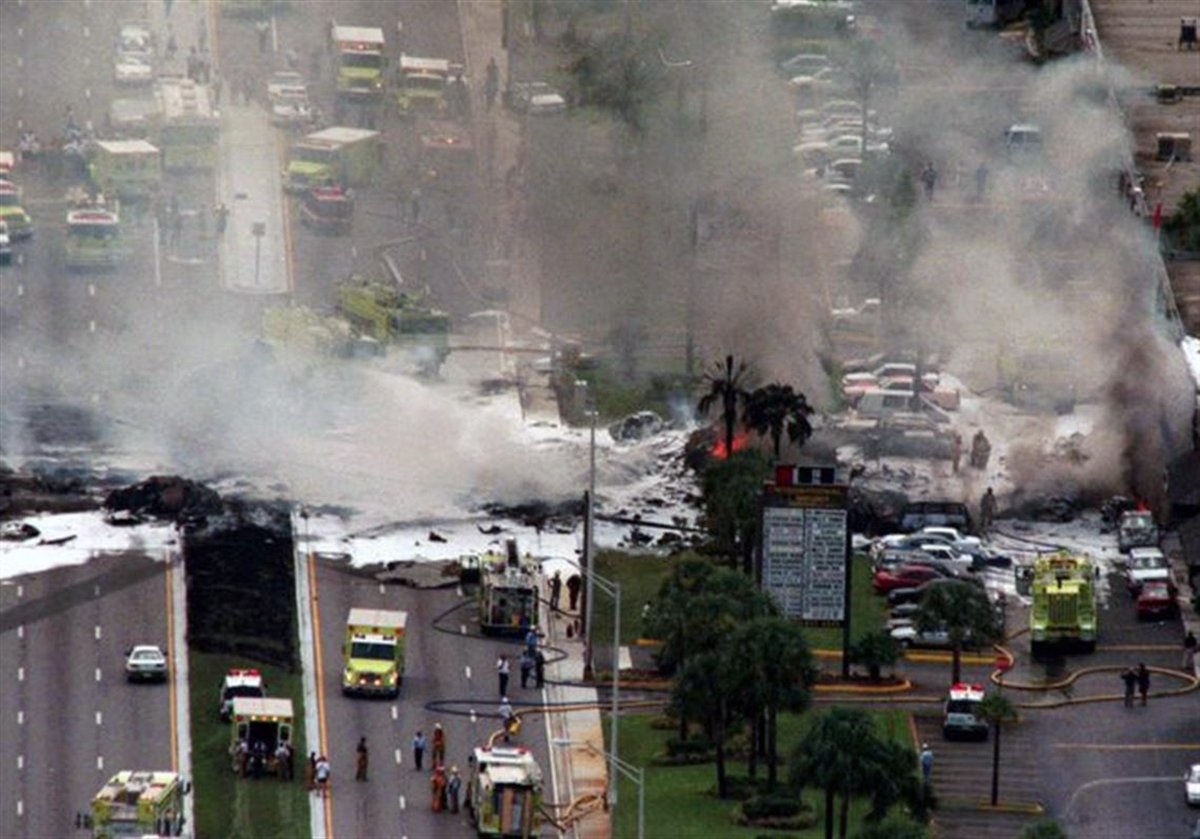
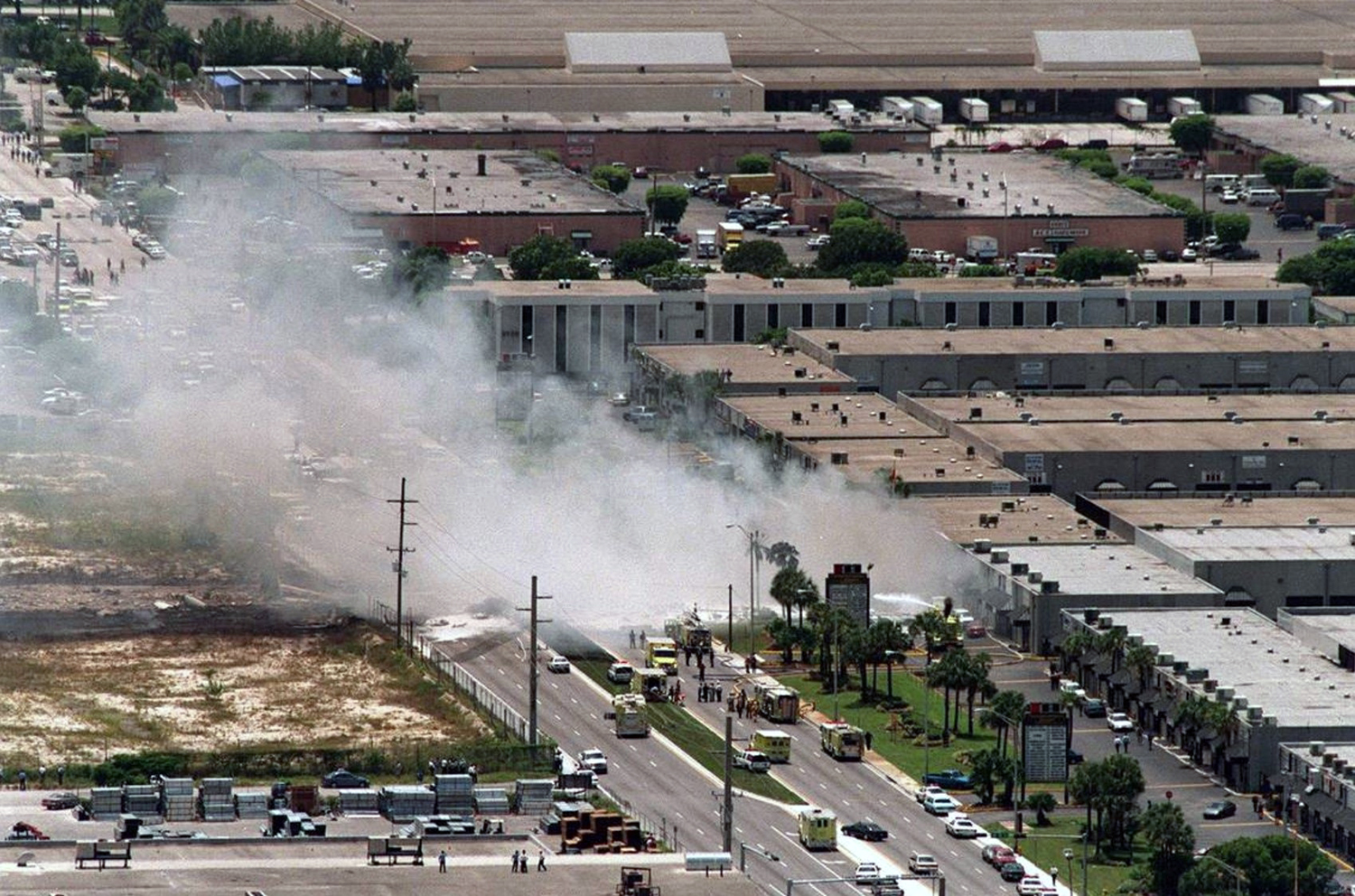
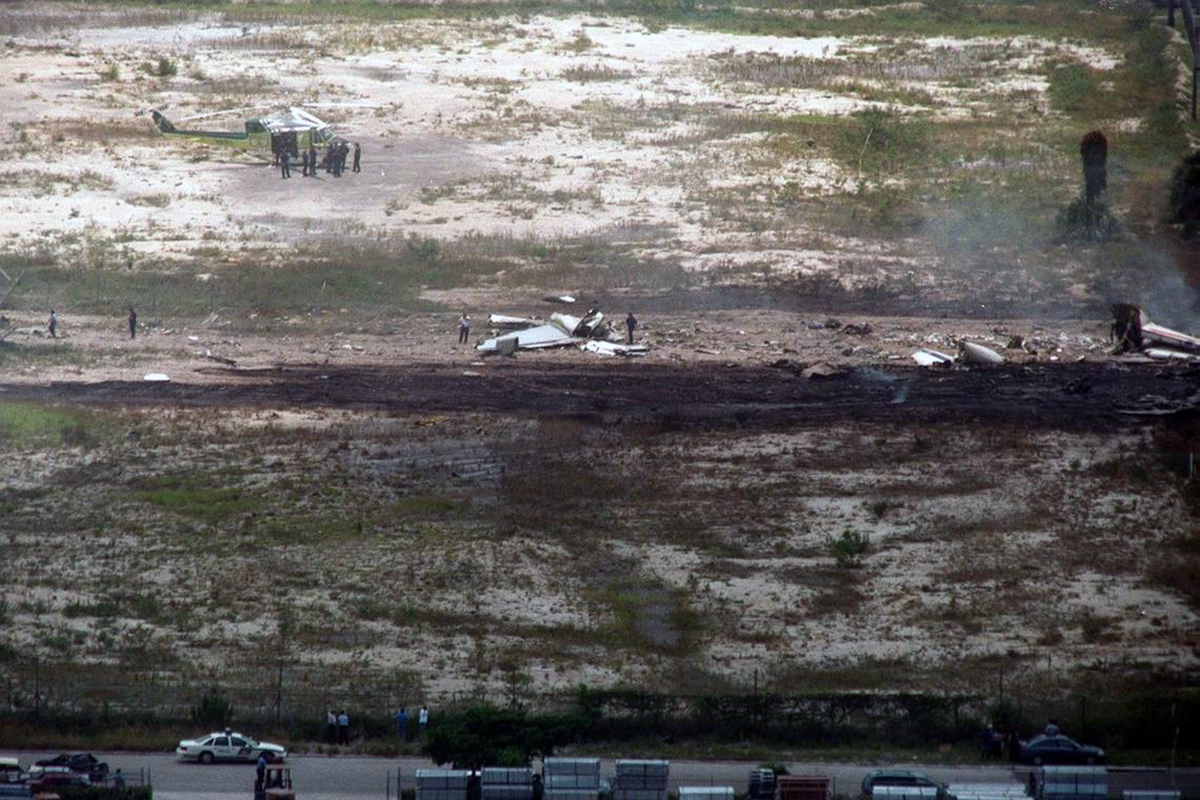

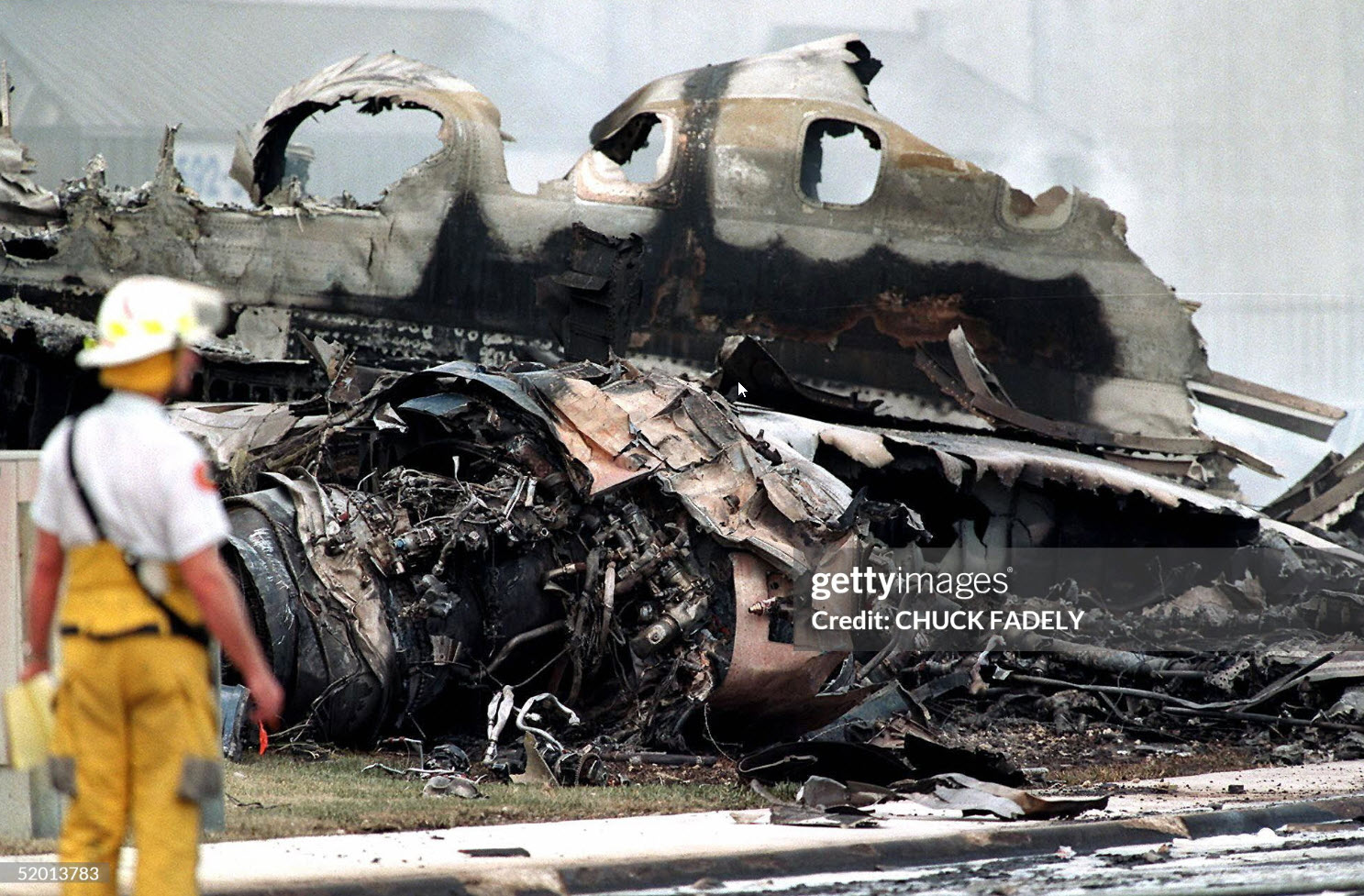

Crash of a Douglas DC-8-63F near Narrows: 6 killed
Date & Time:
Dec 22, 1996 at 1810 LT
Registration:
N827AX
Survivors:
No
Schedule:
Greensboro - Greensboro
MSN:
45901
YOM:
1967
Crew on board:
3
Crew fatalities:
Pax on board:
3
Pax fatalities:
Other fatalities:
Total fatalities:
6
Captain / Total hours on type:
869.00
Copilot / Total hours on type:
1509
Aircraft flight hours:
62800
Aircraft flight cycles:
24234
Circumstances:
The airplane impacted mountainous terrain while on a post-modification functional evaluation flight (FEF). The pilot flying (PF) had applied inappropriate control column back pressure during the clean stall maneuver recovery attempt in an inadequate performance of the stall recovery procedure established in ABX's (Airborne Express) operations manual. The pilot not flying (PNF), in the right seat, was serving as the pilot-in-command and was conducting instruction in FEF procedures. The PNF failed to recognize, address and correct the PF's inappropriate control inputs. An inoperative stall warning system failed to reinforce to the flightcrew the indications that the airplane was in a full stall during the recovery attempt. The flightcrew's exposure to a low fidelity reproduction of the DC-8's stall characteristics in the ABX DC-8 flight training simulator was a factor in the PF holding aft (stall-inducing) control column inputs when the airplane began to pitch down and roll. The accident could have been prevented if ABX had institutionalized and the flightcrew had used the revised FEF flight stall recovery procedure agreed upon by ABX in 1991. The informality of the ABX FEF training program permitted the inappropriate pairing of two pilots for an FEF, neither of whom had handled the flight controls during an actual stall in the DC-8.
Probable cause:
The inappropriate control inputs applied by the flying pilot during a stall recovery attempt, the failure of the non flying pilot-in-command to recognize, address, and correct these inappropriate control inputs, and the failure of ABX to establish a formal functional evaluation flight program that included adequate program guidelines, requirements and pilot training for performance of these flights. Contributing to the causes of the accident were the inoperative stick shaker stall warning system and the ABX DC-8 flight training simulator's inadequate fidelity in reproducing the airplane's stall characteristics.
Final Report:
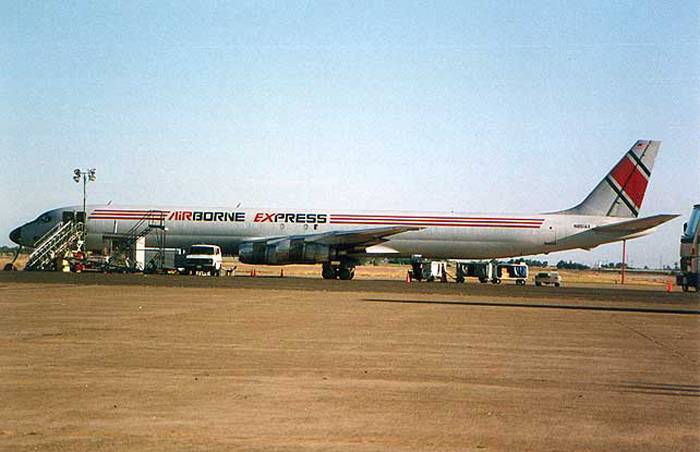
Crash of a Douglas DC-8-55F in Port Harcourt
Date & Time:
Dec 17, 1996 at 0500 LT
Registration:
9G-MKD
Survivors:
Yes
Schedule:
Luxembourg - Port Harcourt
MSN:
45965
YOM:
1968
Crew on board:
4
Crew fatalities:
Pax on board:
0
Pax fatalities:
Other fatalities:
Total fatalities:
0
Circumstances:
While descending to Port Harcourt Airport, the pilot-in-command established a visual contact with the runway lights at an altitude of 2,500 feet. The approach was continued when few seconds later, while the crew was thinking his altitude was 390 feet, the aircraft collided with trees. The captain decided to initiate a go-around procedure but all four engines failed to respond properly. The aircraft continued to descend and struck the ground 250 metres short of runway threshold. Upon impact, the undercarriage were torn off and the aircraft slid for few dozen metres before coming to rest. All four crew members escaped uninjured and the aircraft was damaged beyond repair. It was reported that the aircraft was unstable on final approach.
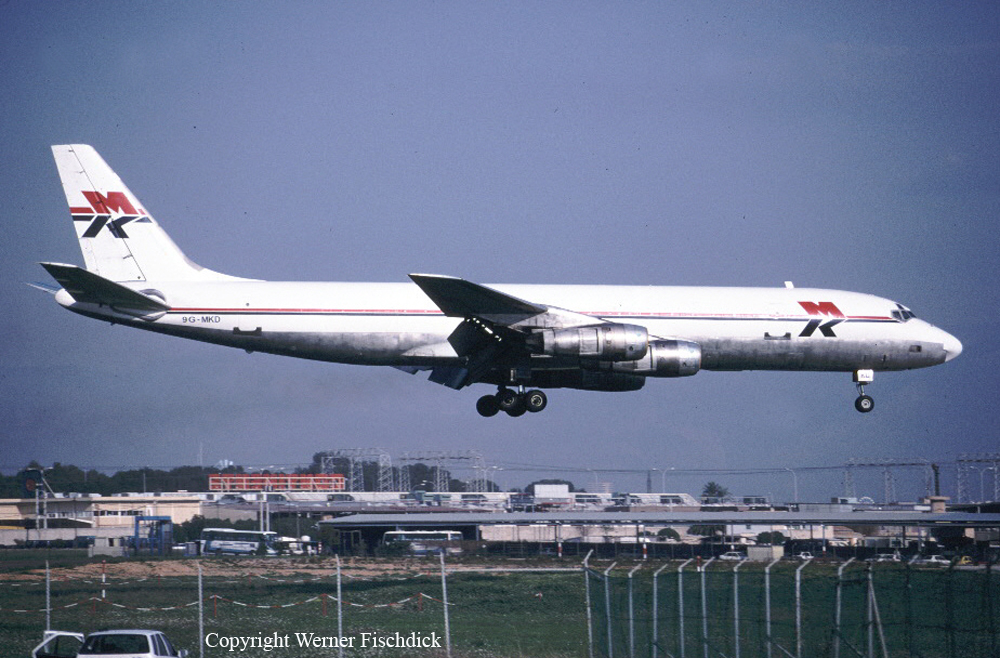
Crash of a Douglas DC-8-55F in Asunción: 22 killed
Date & Time:
Feb 4, 1996 at 1412 LT
Registration:
HK-3979X
Survivors:
No
Schedule:
Barranquilla - Asunción - Campinas
MSN:
45882
YOM:
1966
Flight number:
ALA028
Crew on board:
3
Crew fatalities:
Pax on board:
1
Pax fatalities:
Other fatalities:
Total fatalities:
22
Captain / Total hours on type:
5919.00
Copilot / Total hours on type:
3158
Aircraft flight hours:
66326
Aircraft flight cycles:
20567
Circumstances:
The aircraft was completing a positioning flight from Asunción to Campinas on behalf of Alas Paraguayas, under flight number ALA028. As there was no cargo on board, the crew decided to make profit of the situation to perform training upon takeoff. During the takeoff roll on runway 02, at Vr speed, the captain reduced the power on engine n°1 and after liftoff, he reduced power on engine n°2. With the undercarriage still down and the flaps at 15°, the aircraft became unstable, lost height and crashed in the district of Mariano Roque Alonso, about 1,500 metres past the runway end. The aircraft was destroyed by impact forces and a post crash fire and all four occupants were killed as well as 18 people on ground, most of them children taking part to a volleyball game.
Probable cause:
It was determined that the loss of control during initial climb was the consequence of the decision of the crew to perform training upon takeoff, intentionally reducing power on both engines n°1 and 2. This decision was taken at a critical phase of flight and the copilot-in-command was unable to maintain control of the aircraft, causing the aircraft to lose speed and to stall.
The following contributing factors were reported:
- The captain's experience in such configuration was low,
- Lack of flight safety doctrine in the cockpit during all flight,
- Execution of unauthorized takeoff training under uncontrolled conditions,
- Execution of such take-off training by a person who was not qualified as an instructor.
The following contributing factors were reported:
- The captain's experience in such configuration was low,
- Lack of flight safety doctrine in the cockpit during all flight,
- Execution of unauthorized takeoff training under uncontrolled conditions,
- Execution of such take-off training by a person who was not qualified as an instructor.
Final Report:



Crash of a Douglas DC-8-55F in Harare
Date & Time:
Jan 28, 1996
Registration:
Z-WSB
Survivors:
Yes
Schedule:
Johannesburg - Harare
MSN:
45805
YOM:
1965
Crew on board:
5
Crew fatalities:
Pax on board:
0
Pax fatalities:
Other fatalities:
Total fatalities:
0
Circumstances:
Following an uneventful cargo flight from Johannesburg, the crew started the approach to Harare Airport in poor weather conditions with heavy rain falls. After landing on runway 05, the aircraft encountered difficulties and was unable to stop within the remaining distance (runway 05 is 4,750 metres long). It overran, lost its nose gear and came to rest. All five crew members escaped uninjured and the aircraft was damaged beyond repair.
Probable cause:
The following findings were reported:
- Poor weather conditions with heavy rain falls,
- Limited visibility,
- The runway 05 was wet and the braking action was reduced,
- The aircraft suffered aquaplaning,
- The reverse thrust systems were unserviceable on engine n°2 and 4,
- The crew completed the landing without the spoilers being armed,
- The aircraft was not airworthy,
- The crew failed to follow the approach checklist.
- Poor weather conditions with heavy rain falls,
- Limited visibility,
- The runway 05 was wet and the braking action was reduced,
- The aircraft suffered aquaplaning,
- The reverse thrust systems were unserviceable on engine n°2 and 4,
- The crew completed the landing without the spoilers being armed,
- The aircraft was not airworthy,
- The crew failed to follow the approach checklist.
